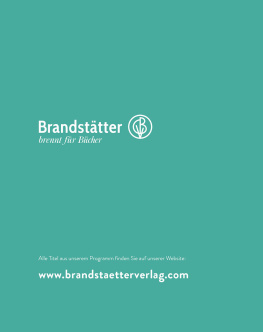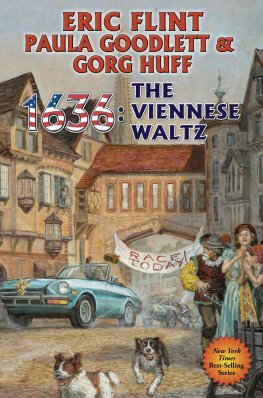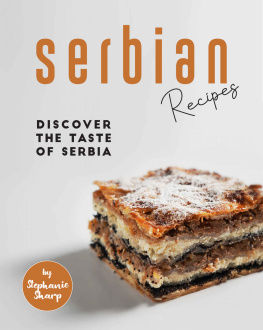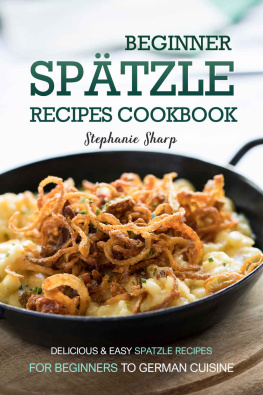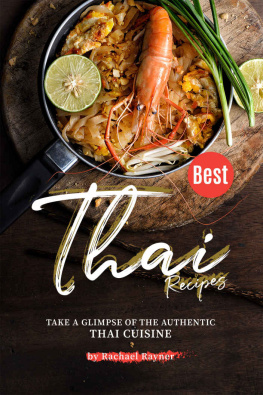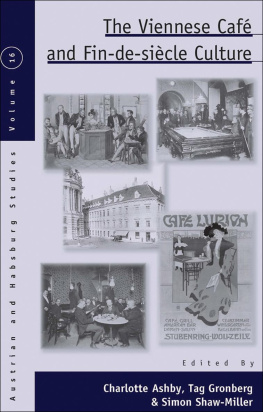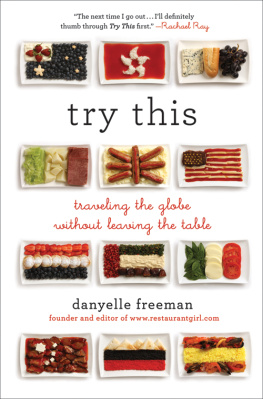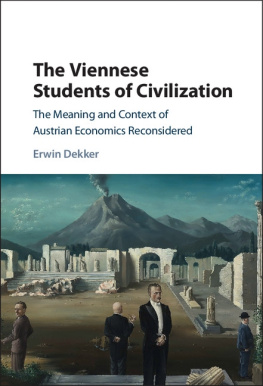
PLACHUTTA
CLASSICS OF
VIENNESE CUISINE
APPENDIX
Viennese Cuisine A culinary gem
V ienna, the one-of-a-kind city situated in the very heart of Europe, enjoys a position in the areas of music, art and culture whose dominance is virtually unrivalled in the world. But it also boasts a culinary gem: the fabled Viennese cuisine.
With regard to its historic development, it might be described in todays terminology as a kind of fusion cuisine, with Italian, Turkish, Spanish and French roots. As the power centre of the Habsburg Monarchy, Vienna brought together many nations, whose native foods were imported by diplomats and their social entourage, military personnel, immigrants, cooks and household staff to the capital city, where they merged to form an autonomous style of cooking: Viennese cuisine. Because of the proximity of Bohemia and Hungary to Vienna, Bohemian sweets (known as Mehlspeisen ), roasts and dumpling dishes, as well as the Hungarian paprika-infused goulash dishes make up a significant part of Viennese cuisine, although in its Viennese version the latter has gained a certain independence from its original form. But restricting Viennese cuisine to the influences of the regions and lands of the former Austro-Hungarian Empire would be a gross oversimplification. Viennese cuisine is the result of a broad range of foods whose origins cannot always be clearly ascertained, and whose boundaries with Austrias regional cuisine are fluid.
If you spend any time in Vienna, you are familiar with the ubiquitous, quintessential dishes of this cuisine: Wiener schnitzel, boiled beef, goulash, Sachertorte and apple strudel. But dig a bit deeper into the foundations of Viennese cuisine and you quickly realize that this is a cuisine for all classes of society, combining refined delicacies from the imperial court and noble estates with the robust fare of the common people.
One of the most characteristic features of Viennese cuisine is beef broth, with its utterly astonishing variety of soup fillers, or garnishes. Compared with the French consomm, which has been clarified and liberated of all fat, the Viennese beef soup, with its typical gold eyes swimming on the surface, comes across as rather staid but is nevertheless quite filling. This dish has the great advantage that ideally the beef that has been cooked along with the broth serves as the main dish, along with root vegetables, slices of marrow and leek.
The great variety of soup fillers in Viennese cuisine is due in no small measure to the fact that in the past it was vital to use leftovers, meat scraps and even offal as efficiently as possible. Leberkndel and Lebernockerl (liver dumplings, large and small), Hascheestrudel (strudel filled with minced meat), Milzschnitten (beef spleen on toast) and Kseschberl (little cheese biscuits) all testify to this practice. Leftover bread was used to make Panadelsuppe (bread soup), while the head and bones of a carp serve as the basis for the typically Viennese Fischbeuschelsuppe (bouillabaisse), served traditionally at Christmas.
THE WIENER SCHNITZEL AND THE FONDNESS OF THE VIENNESE FOR BREADED AND FRIED FOODS
The origins of the Wiener schnitzel are enshrouded in innumerable legends and myths, and there is no conclusive evidence to support any of them. What is certain, however, is that one requires a certain expertise to make a genuine Wiener schnitzel. As one wise saying has it, the seemingly simple things require the most care and attention.
Genuine Wiener schnitzel served in restaurants must be made of veal, and the classic cut of veal for this dish is carefully trimmed topside. Gourmet restaurants use the even more tender veal loin, which justifies the higher price and delights the palate. At home, cooks are free to use the more economical topside of pork or the juicy neck of pork.
The origins of the Wiener schnitzel are enshrouded in innumerable legends and myths.
Opinions vary as to how thick or thin the Wiener schnitzel should be pounded, to what degree of brownness it should be fried, and whether it is better to use clarified butter or neutral oil. Basically the schnitzel should be sufficiently thick that the meats flavour is not drowned out by that of the crispy breading. The classic accompaniment to the schnitzel, aside from a lemon wedge, is the obligatory potato salad, which should have a slightly creamy consistency and can be combined with lambs lettuce.
The fondness of the Viennese, and the Austrians in general, for breaded and fried foods be it fried chicken, Christmas carp, or vegetarian variations like fried button mushrooms, porcini, celeriac slices or cauliflower flowerets continues unabated and would seem to confirm the notion that everything fried in a jacket of crumbs receives a very warm reception in this country.
HAUSMANNSKOST: THE ART OF CULINARY SIMPLICITY
For many younger Viennese the term Hausmannskost is nearly incomprehensible. It refers to what English speakers might call good home cooking, and in the past the purpose of this kind of food was to transform leftover roasts, boiled meats, ham, pasta and potatoes into veritable symphonies of flavours. At its roots, Hausmannskost is a creative way of using up leftovers. Viennese cuisine boasts a very rich array of these kinds of dishes.
The unbroken popularity of classic Viennese Hausmannskost fare such as Schinkenfleckerl (ham and noodle casserole), Eiernockerl (small pan-fried dumplings with egg), Grenadiermarsch (potato-noodle hash), Erdpfelgulasch (potato goulash), Hascheenudeln, Grammelschnmarrn and Briesnudeln (veal sweetbreads with pasta) is evidence that the culinary art of changing something simple into something special is still alive and well. When we see today how the careful utilization of foodstuffs is again a concern evidenced by the nose to tail cooking trend it becomes clear how forward-looking this culinary heritage is.
For many younger Viennese the term Hausmannskost is nearly incomprehensible.
THE VIENNESE HOLIDAY ROASTS
Back in the days when the appearance of Sunday suits signalled a day off from work, and holidays were celebrated in accordance with their original meaning, the large roast was the culinary highlight of family meals. In the past, when restaurants and taverns still cooked on wood- or coal-burning stoves, and refrigerators and cold stores were cooled by ice blocks from ice-making plants, roasts were a logistical wonder weapon. Freshly cooked, kept warm in the oven and expertly cut into perfect slices as needed, they could provide hundreds and even thousands of guests with a high-quality meal in nearly no time at all.
Viennese cuisine offered a wonderful repertoire of these dishes. In this book we present what are probably the most beloved classics among the Viennese holiday roasts: Nierenbraten (whole roast veal with kidneys), Kmmelbraten (roast pork with caraway seeds), Gefllte Kalbsbrust (stuffed breast of veal) and Netzbraten (roast cooked in a pigs caul). According to contemporary reports, at the Ottakringer Bru, the predecessor of todays Plachutta Hietzing and at that time a restaurant of immense dimensions (the garden alone seated over 1,000 people), more than 4,000 guests could be fed on a busy Sunday or holiday by means of the ready-made roast system.
Next page
